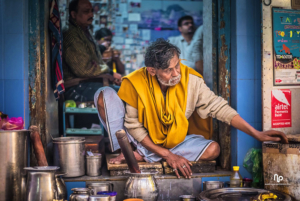5 Poverty Reduction Initiatives in India

Since the 2000s, India has made great strides towards decreasing poverty. Between 2011 and 2019, some 262 million people rose above the poverty level. While the COVID-19 outbreak reversed this trend, India expects to make a comeback thanks to its government initiatives addressing poverty. Here are five poverty reduction initiatives in India.
- Saansad Aadarsh Gram Yojana (SAGY): Prime Minister Narendra Modi started Saansad Aadarsh Gram Yojana (SAGY) after considering the increasing poverty rates in October 2014. SAGY is a government program that focuses on the social and cultural development of villages. A central goal of SAGY’s is for each Member of Parliament to develop three villages by 2019. These villages serve as model villages providing basic amenities and livelihood opportunities. The overall purpose of the program is to improve the living conditions and overall quality of life for all residents. This occurs by increasing educational opportunities, raising literacy rates and updating social norms and customs. In an effort to improve the development of communities, SAGY converts schools into “smart schools.” The smart schools are equipped with IT-enabled classrooms, e-libraries and web-based teaching in an effort to make all students e-literate. If students are e-literate, they are more likely to receive a quality education. Between SAGY’s initiation in 2014 and a June 2017 referendum, it implemented 2,649 social development projects, completed 1,239 projects and had another 539 still in progress. In addition to social development, SAGY also has thousands of projects devoted to health, economic development, infrastructure and more.
- National Rural Livelihood Mission (NRLM): The Ministry of Rural Development started National Rural Livelihood Mission (NRLM) in June 2011 to provide the impoverished with a stable monthly income. Unemployment serves as one of the many reasons for poverty in India. In 2019, more than 75% of households in India did not have a stable source of income. NRLM provides households with the means to self-employment and skilled wage employment opportunities to improve their livelihoods. The program emerged upon the belief in the hidden skills and capabilities of those in poverty. All it takes is guidance and resources to create a sustainable life. Such resources include institutional platforms that the World Bank partially funds, entitlements, access to rights and public services. NRLM’s strategy allows the economy of the country to build from within and flourish. NRLM increases household revenue and savings by increasing finance accessibility and jobs, and decreasing loan dependency. Both men and women also experienced increased participation in the labor force. After evaluation, researchers found that the program impacted the households in the treatment villages more than in the controlled villages. Treatment households experienced a 19% increase in income over 2.5 years.
- Deendayal Antyodaya Yojana-National Urban Livelihoods Mission (DAY-NULM): The Deendayal Antyodaya Yojana-National Urban Livelihoods Mission (DAY-NULM) similarly works to reduce poverty and vulnerability by providing access to self-employment and skilled wage employment opportunities. The Ministry of Housing and Urban Affairs began the NULM in September 2013. The poor in India’s urbanized areas have low education rates, harsh living conditions and minimal work opportunities. DAY-NULM motivates the urban poor, trains them, provides shelter and establishes rights-based linkages with other programs. The Employment through Skills Training & Placement (EST&P) Component constitutes one of DAY-NULM’s programs that showcases great results. This initiative provides three types of programs. Firstly, it trains fresh entrants to the job market. Second, it offers skill up-gradation of those employed. Thirdly, it extends formal recognition and certification of those with both informal and non-formal skills training in any vocational trade or craft.
- Mahatma Gandhi National Rural Employment Guarantee Act (MGNREGA): The Mahatma Gandhi National Rural Employment Guarantee Act (MGNREGA) passed in August 2005 and launched the following February. MGNREGA’s mission is to provide 100 days of guaranteed wage employment to inexperienced workers. It also seeks to increase economic security and decrease labor migration from rural to urban areas. A portion of the jobs is specifically for women. Since its launch, job opportunities increased by 240% in large part thanks to MGNREGA’s role. The equality and quality of labor also improved in rural India, including diminished wage fluctuation and the gender pay gap. MNREGA also provides minimum wages to employees, making basic amenities accessible and helping increase income and purchasing power. Since 2006, MNREGA gave jobs cards to nearly 900 million households. Of the nearly 315 million who demanded jobs, 98% received employment. From 2006 until 2015, an average of 45 million households received employment annually, constituting 30% of India’s entire rural household population.
- Pradhan Mantri Jan Dhan Yojana (PMJDY): In August 2014, Modi launched Pradhan Mantri Jan Dhan Yojana (PMJDY). Driven by financial inclusion, PMJDY endeavors to secure communities with affordable financial services. These financial services include pension, insurance, savings and deposit accounts, remittance, credit and insurance. PMJDY opened 12.54 billion accounts by January 2015, with deposits surpassing Rs 10,000 crores ($133 billion). In total, PMJDY achieved opening 17.9 billion accounts during the first year of implementation. As a result, deposits doubled between 2015 to 2020.
How Poverty Reduction Initiatives in India Have Helped
The government’s investment in these five poverty reduction initiatives in India, among others, helped decrease India’s poverty rate tremendously. Each individual initiative provides the impoverished with effective ways and resources to escape poverty. Like the NRLM states, the impoverished have strong desires to overcome poverty and have the capabilities to do so. All it takes is initiative.
– Destiny Jackson
Photo: Flickr
